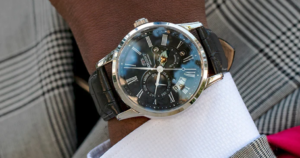- According to a recent report by PricewaterhouseCoopers (PwC), China is projected to become the world’s largest market for personal luxury goods by 2030, surpassing the United States and Europe.
- After experiencing significant fluctuations during the pandemic, the Chinese luxury market rebounded last year, reaching sales worth $69 billion.
- This remarkable growth is primarily attributed to the resurgence in Chinese tourism following the economic downturn.

Projected Market Value and Global Share
PwC analysts predict that by 2030, China’s luxury goods market will be valued at $148 billion, constituting 25% of the global luxury market. In contrast, the share of the United States and Europe in the global luxury retail sector is expected to decline from the current 27% to 23%. This forecast underscores China’s accelerating market growth, fueled by the rising affluence of its younger generation and the expanding online sales of luxury brands.
The HaiNan Economic Influence
A key factor driving this expansion is the anticipated development of the HaiNan province. By 2025, HaiNan aims to implement a unique customs system independent of the rest of China, allowing most imported goods to be duty-free. This special economic zone will also offer tax incentives to businesses and individuals, along with relaxed visa requirements, positioning HaiNan as a global free trade center. PwC’s report predicts that HaiNan will soon become a major offshore region for China, alongside Hong Kong and Macau, creating substantial business opportunities.

Luxury Brands’ Strategic Shifts
Luxury brands in China are adapting their strategies to tap into this booming market. Increasingly, they are opening stores in second and third-tier cities. Last year, nearly three-quarters of the 277 new luxury stores in China were located outside the four top-tier cities: Beijing, Shanghai, Guangzhou, and Shenzhen. This marked a 64% increase compared to 2022 and a 56% rise from 2021. Notably, LanZhou, the capital of Gansu province, saw the highest number of new luxury store openings, reflecting this trend.

Diverse Market Strategies
Luxury brands in China are employing various strategies to cater to different market segments. Since 2022, some brands have focused on expanding in major cities, targeting VICs (Very Important Clients) who are more resilient to economic fluctuations. Brands like Michael Kors, on the other hand, are increasingly targeting smaller cities, leveraging online sales and specific Chinese tools like livestreaming to reach new audiences. This approach, known as “affordable luxury,” heavily relies on middle-class spending and was significantly impacted by the pandemic.
Recommendations for Foreign Luxury Brands
PwC advises foreign luxury brands to concentrate on VICs and the second generation of millionaires in China. By offering ultra-premium, highly personalized products, these brands can achieve long-term success in the Chinese market. This strategy, focusing on quality and exclusivity, is seen as the key to capturing the hearts of China’s affluent consumers.











